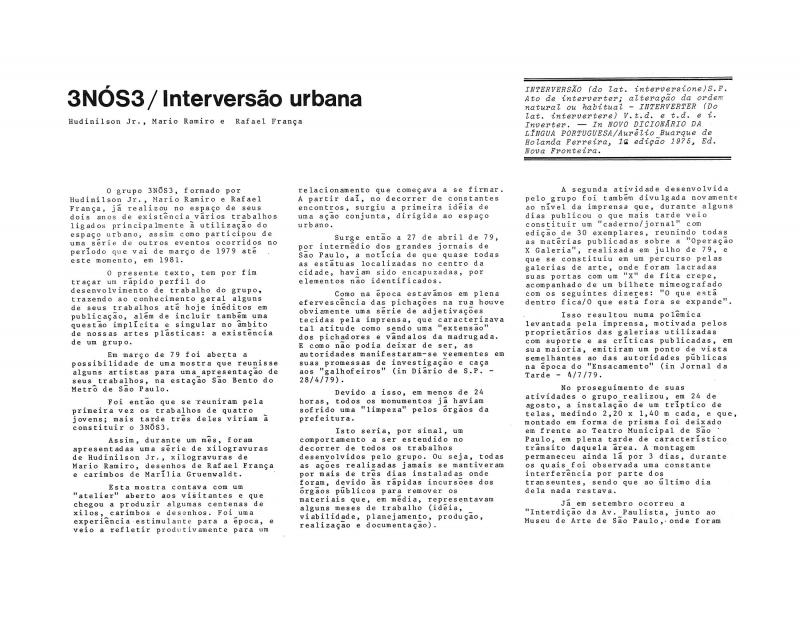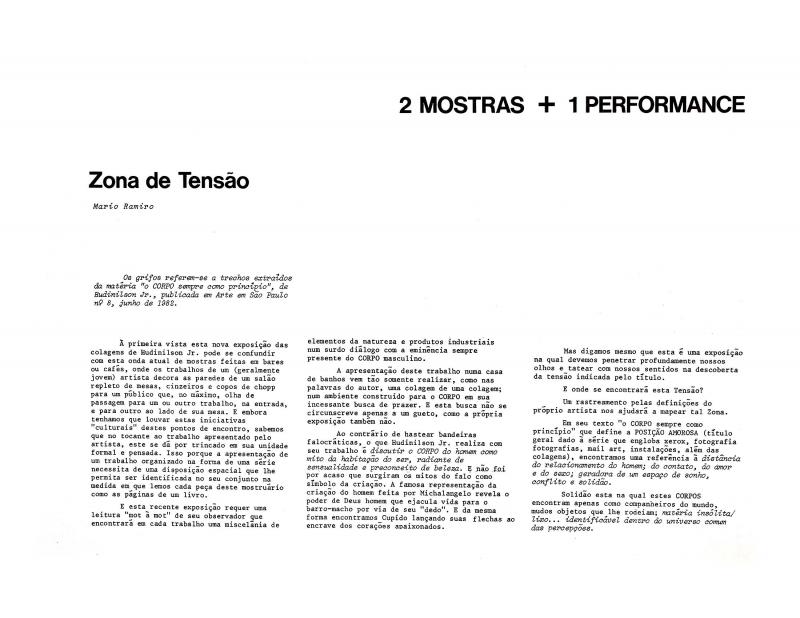The show Xerox Action, held at the Museu de Arte Contemporânea da Universidade de São Paulo from August 2 to 28, 1983, is a clear example of how artists from the time explored language through the means of production, communication, and distribution in a consumer society. In conjunction with the exhibition, the performance Narcisse took place at the Centro Cultural São Paulo. Hudinilson Jr. used technology, in this case Xerox photocopies, to produce a series of works that revolved around the image of the male body and the myth of Narcissus.
Brazilian artist Hudinilson Jr. (1957–2013) formed part of 3NÓS3, a group of artists that did performances in São Paulo from 1979 to 1982. [For more information on Hudinilson Jr.’s work, see ICAA digital archive (doc. no. 1111226); for information on the group formed by Hudinilson Jr., Mário Ramiro, and Rafael França, see “3NÓS3/ Interversão urbana” (doc. no. 1110667) and “Zona de tensão” (doc. no. 1111240)]. The show addressed in this text took place soon after the group disbanded.
Jean-Claude Bernardet was born in Belgium (b. 1936) and grew up in Brazil. He is a professor in the film and communications department of the Escola de Comunicações e Artes at the Universidade de São Paulo. As a filmmaker, and later, a critic, Bernardet played a critical role in the education of a number of artists who were producing work involving multimedia and new technologies starting in the seventies.
The magazine Arte em São Paulo—where this article was published—set out to be an independent publication capable of radically intervening in the art scene. Its first editor was Luiz Paulo Baravelli (b. 1942), who had directed Rex Time, a newsletter published in the mid-sixties by the group of the same name; later, its editor was critic and curator Lisette Lagnado. A total of thirty-seven issues of the magazine were put out before it closed in 1987.



